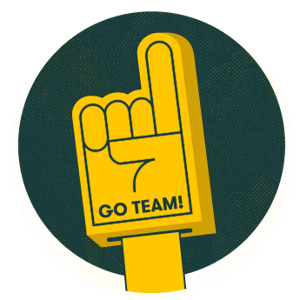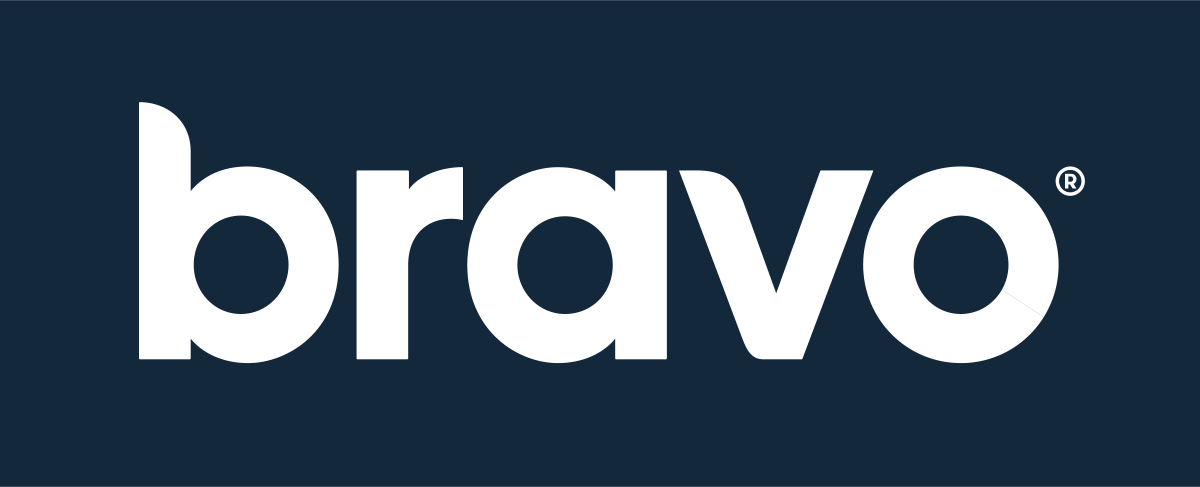The moment you step foot in your office every morning, you’re consumed in it. Your organization’s culture is an aura that subconsciously dictates your – and every employee’s – mood, outlook, decisions, productivity, and more.
Furthermore, your organization’s culture affects everything from employee satisfaction and retention to the bottom line and profitability.
While your culture is unique to only your organization, it probably falls into one of the main categories of cultures.
But let’s slow down for a moment. We forgot to ask: What type of company culture do you have?
If you’re not sure, don’t worry. Even if you have a thorough understanding of your company’s culture, it’s exceedingly advantageous to educate yourself on the different types of workplace cultures. Because culture is an evolving, living element of your business, and it’s important to know how your culture could – or maybe should – change.
Indeed, the ebbs and flows of your business may demand a cultural shift – and that’s ok. Perhaps that’s even why you landed on this article today. Is your company is ready to make a change for the better?
Let’s dive in and see where we come up:
4 Main Types of Organizational Culture
Industry often has a strong pull when it comes to the kind of culture a company establishes and maintains, but that doesn’t mean your organization can’t break out from the norm to a degree. And, of course, every type of culture has benefits and downsides, but by understanding each category, you can adopt pieces from each and forge a direction that best aligns with your workforce.
1. Hierarchy Organizational Culture
Defining characteristics:
- “Hierarchy”, or “traditionalist” cultures hire individuals who prove they can deliver efficiency and succeed under uniformity.
- Board members and C-Suite executives make all major decisions.
- Employees respect strict guidelines, follow organizational rules, and uphold department and team roles.
- Employees sometimes interact at work, but very rarely intermingle with different departments and outside of work.
For traditionalist cultures, it’s all about the clearly defined hierarchy. One of the most defining characteristics, aside from the corporate or organizational ladder, is the dress code. Hierarchy cultures usually require the standard tie, blouse and slacks apparel.
Fostering a formal and structured work environment, this culture heavily relies on its rules and policies to keep order in the workforce and the organization functioning smoothly. Additionally, hierarchy-based cultures typically take a numbers-focused approach to risk-averse decision making and efficiency-based coordination.
Above all, the company values the bottom line more than anything else.
An additional note with traditionalist cultures: There has been – and continues to be – a considerable shift in how they operate and communicate because of the digital age. As more millennials enter the ranks and as digital mediums become more influential and necessary to stay relevant, these cultures are beginning to break down walls within their structure and are slowly embracing change.
Potential Downsides: Creativity, experimentation and personal growth can often be stifled within this culture due to micromanagement and strict procedures. Employees can also become disconnected from the company altogether because they don’t feel valued or even noticed.
Taking steps to acknowledge and appreciate employees can go a long way. Offering programs that empower improved well-being can also show them that their company cares about them on a personal level.
2. Adhocracy Organizational Culture
Defining characteristics:
- “Adhocracy”, or “elite” cultures hire the most innovative, entrepreneurial-minded individuals who embody the true traits of a visionary.
- Leaders are agile and push dynamic transformation; employees are daring risk-takers.
- Employees are creative problem-solvers who bond over innovation.
- Employees know that expectations run very high in their fast-paced, high-growth company, but they stay motivated by knowing that the products or services they’re developing have the potential to change the market and world.
 Adhocracy cultures don’t walk or even run – they sprint, as these types of cultures aren’t just trying to keep up, they’re determined to lead the charge. As a whole, the company culture is confident and competitive – making work the top priority – and employees bind together to ensure their product or service is prominent in the marketplace.
Adhocracy cultures don’t walk or even run – they sprint, as these types of cultures aren’t just trying to keep up, they’re determined to lead the charge. As a whole, the company culture is confident and competitive – making work the top priority – and employees bind together to ensure their product or service is prominent in the marketplace.
Startups turned trailblazers, adhocracy cultures are seen within organizations like Google, Apple and hundreds more across the country. Employees benefit from the freedom to take initiative and question the status quo, and they are encouraged to seek continuous improvement.
Potential Downsides: With so much pressure to grow fast and create products and services that make a significant impact on the market, employees log long work hours and tend to live with heightened stress levels. Health and wellness initiatives, work-free team outings, and employee recognition programs are great ways to keep this culture balanced.
3. Market Organizational Culture
Defining characteristics:
- Market cultures hire go-getters who are competitive and ready to roll up their sleeves and do whatever it takes to achieve success.
- Leaders are goal-focused and have high expectations; employees do a little bit of everything.
- Employees tend to be close to all colleagues and bounce ideas off one another.
- Employees have a startup-like mindset and work tirelessly to prove the company’s product’s worth.
 Seen within small organizations and startups that have a product or service they’re trying to launch or grow, market cultures are results-based, as they tend to constantly be competing for market penetration, market leadership, and ideal pricing.
Seen within small organizations and startups that have a product or service they’re trying to launch or grow, market cultures are results-based, as they tend to constantly be competing for market penetration, market leadership, and ideal pricing.
Market cultures are very client- or customer-focused, since the organization’s reputation and success depend on their satisfaction and reviews. Because of that, employees focus a lot of energy on measuring client preferences, securing external partnerships, improving productivity, and competing against competitors.
Agility is extremely important to market cultures; the entire organization can shift attention and effort based on market research or customer feedback.
Potential Downsides: With a strong “do whatever it takes” mentality, organizations with market cultures may not give employees set titles or a lot of direction. In turn, accountability can get lost in the shuffle – giving rise to confusion and frustration.
Establishing clearly defined responsibilities and goals can help employees understand what’s needed of them. Additionally, offering tools and resources that focus on reducing stress and improving health can greatly help employees avoid burn out and more serious mental and physical issues that can be induced by a fast-paced, high-pressure work environment.
4. Employee- or Team-First Organizational Culture
Defining characteristics:
- Employee-centric cultures hire for cultural fit first, then experience and skills.
- Employees take pride in their company and their work.
- Employees enjoy socializing outside of work.
- Employees give well thought-out feedback in employee surveys.
 Employee-centric cultures know that the happiness and well-being of their workforce will produce happier clients and better work. That’s why they make employee satisfaction a top priority, instead of setting forth strict rules and guidelines.
Employee-centric cultures know that the happiness and well-being of their workforce will produce happier clients and better work. That’s why they make employee satisfaction a top priority, instead of setting forth strict rules and guidelines.
A large majority of customer service-based companies employ this type of culture. With mentorship and constant communication from leadership; a fun, upbeat environment; flexible schedules; plenty of perks and employee outings; and the autonomy to produce great work the way they see fit, employees feel empowered to go above and beyond for customers and clients and form a tight-knit workforce in the process.
Potential Downsides: As a company grows, this type of culture can be difficult to maintain. But by having an HR professional(s) dedicated to developing and preserving this organizational way of life, it’s more likely to succeed.
How Company Culture Shapes Employee Motivation
You may not know what type of culture shuffles down your office halls and flows through the office vents, but there is a culture present. That being said, understanding and shaping organizational culture can understandably feel overwhelming.
However, culture can become less elusive by simply defining it and then taking steps to mold the exact company culture your workforce needs and deserves.
In general terms, company culture consists of the attitudes, interactions and motivations that develop as a direct result of your company policies and processes.
Therefore, the motivation and attitudes of your workforce – and, subsequently, their productivity, satisfaction and desire to produce great work – are shaped by your company’s rules and processes.
Your company created those; it has the power to amend them…
The Link Between Corporate Culture and Performance
…and, when modifications to company policies take place, six motivating factors should be considered to ensure you’re crafting the most empowering and effective policies and processes.
If you correctly employ these motivations, you will be creating a company culture that moves not only the organization forward, but your employees’ personal and professional lives, too.
Numerous surveys and studies have strived to understand why people work, and psychologists Edward Deci and Richard Ryan have identified six reasons:
- Potential: When an employee feels their role is leading them down a path toward greater things and their ultimate potential.
- Purpose: When an employee feels their individual performance has a larger purpose in society and making a positive impact in the world – no matter how small.
- Play: When an employee feels fulfilled by their work and they enjoy how it awakens their passion and curiosity.
- Emotional pressure: When an employee fears letting people down or being perceived as a failure, they work to avoid the feeling of disappointment.
- Economic pressure: When an employee is motivated by financial factors and works to achieve the reward.
- Inertia: When an employee’s only reason for working is to follow societal standard.
Note that not all of these factors are positive. Research has suggested that employees who are motivated by positive factors – which are more prominent in certain company cultures – they are typically more productive, positive and engaged.
Since every factor stems from an individual’s deep-rooted thoughts and beliefs, a company culture that is focused on employee health and well-being can fundamentally change an employee’s outlook and improve their quality of life.
Regardless of what culture your organization has or is creating, making employee wellness a main component to your processes can ensure your company is a place for employees to grow, feel valued and feel supported in their efforts to maintain or improve health.
Create a Culture of Well-Being
Consider the multiple dimensions of wellness: physical, emotional, social, spiritual and intellectual. How can you adjust formal and informal policies and practices to better support well-being?
"Employees should feel supported to focus on their well-being within the organization by their managers and leadership, letting employees workout during lunch, schedule preventive visits during working hours, and take walking breaks is powerful," says Deanna Wolfe, Wellness Solutions Strategist at Bravo.
Restructuring of your company's day-to-day to include employee well-being is much easier than it may seem – and, almost every aspect of your business will reap the benefits of a happier, more productive workforce.
At Bravo, we work hand-in-hand with your team to identify unhealthy practices and shift formal and informal policies and procedures so that healthier practices and norms can take root in your culture.
Another benefit? We design well-being programs that can pay for themselves and generate additional dollars for HR teams to reinvest back into their people, all while measurably reducing health risks and claims trends.
Learn more about how you can work well-being into your organization’s daily workflow.
Download our Wellness in the Workplace Guide to find out how you can overcome industry-specific challenges and cultural barriers to well-being.



